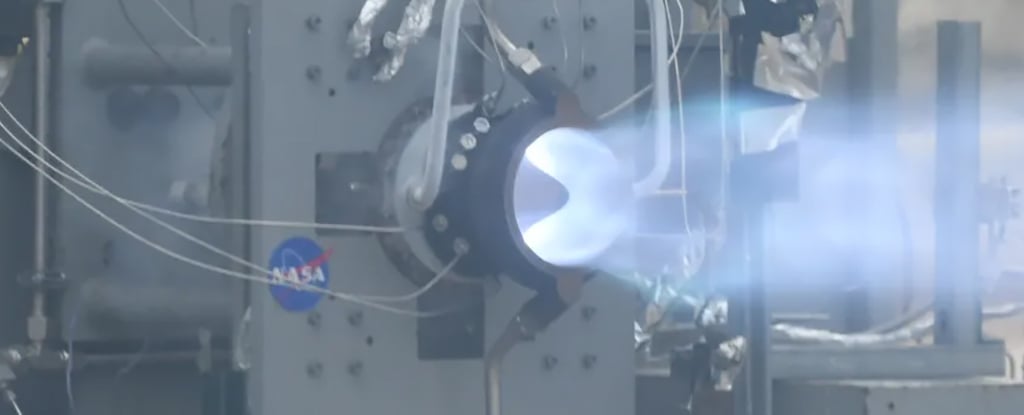After setting foot on the Moon, the next destination for humankind is Mars, which presents a whole new set of challenges in speedy, long-distance space travel.
It’s a Rotating Detonation Rocket Engine"
What makes the RDRE so revolutionary is that it makes use of a sustained detonation circling around a ring-shaped channel, fed by a mix of fuel and oxygen which is ignited by each passing explosion.
Crucially, the RDRE uses less propellant fuel than conventional rocket engines, and is simpler in terms of its machinery and mechanisms. That means going into space becomes cheaper, and traveling further distances becomes possible.Saved you a click.
NASA invented a space ship powered by a rotary engine? Noice, at least until the apex seals give out, but they should be good for 80k at least.
Wankel and Mazda shine blessings upon you and your RX family
Thank you I was running low on clicks.
That sounds sick. I wonder which sci-fi author came up with this idea ~60 years ago.
My bet’s on Heinlein.
So it’s truthfully Revolutionary, hark! A spinning engine
So they invented the rocket powered wheel?
No, it’s just gas powered car that still needs tanks and has everyone knows a around trip back to anywhere requires gas. The “ECO” of space travel.
And how else are you going to move things in space? Are you hiding a reactionless drive over there? Less fuel use is a good thing.
We don’t have unlimited fuel, rockets cost too much fuel. It’s not even normal fuel either, it’s rare chemistry rocket technology that takes a while to develop.
Alright so nobody’s going to stop launching rockets realistically, there’s too much potential in space to just ignore, rdre are a way to do the same with less.
Revolutionary
I see what they did there.
This is a fancy aerospike engine right? The rotating detinations gives it higher chamber pressure and therefore better ISP or something?
I will look for the Scott Manley video on this later (I think it was him?) Edit: also a Real Engineering one that explains the aero-spike nozzle
Anyone have the ISP of this experiment to compare to other engines?
I remember first hearing about the development of this back in the early 90s on Beyond 2000.
I heard that the destination is actually Venus because it’s closer and has oxygen in the upper atmosphere.
Venus is significantly more hostile than Mars, so while we definitely want to do more with Venus, Luna and Mars are clear next-ups for manned landings.
While all of Mars is hostile to human life, Venus is also incredibly hostile to equipment, and thus requires a different approach to even unmanned launches.
Current maximum lifetime for any unmanned craft in the Venusian atmosphere (to say nothing of the ground) is only about 2 hours.
Isn’t that on the surface? I believe Venus’s upper atmosphere is a lot more welcoming.
That’s true about their upper atmosphere, but we’re nowhere close to being able to capitalize on it (as in, no missions even planned). Closest we’ve got on paper is an orbiter by the early 30s.
Hopefully in my lifetime we see an upper atmosphere balloon or something. That alone would be unbelievably cool.
give me a hot air balloon and a hang glider and send me out Ill be the pioneer
Dude what’s neat about this is Oxygen on Venus is like Helium on Earth (less dense than most of the atmosphere, so rises naturally) so your balloon doesn’t even need to be hot, just really sturdy.
Theres oxygen on Venus like there’s argon on earth, it’s so miniscule it’s useless.
Correction: Get the rich fast to mars.
If they’re leaving them there, I’d be all for it
NASA plans to have a manned mission to Mars in the next 6 years.
Technically speaking, if the engine was like 2km faster, this headline would be true.
2km is a measure of distance not speed…
2kph, better?
The international standard is km/h.
Why not using SI units and m/s?
km/h is an SI unit.













